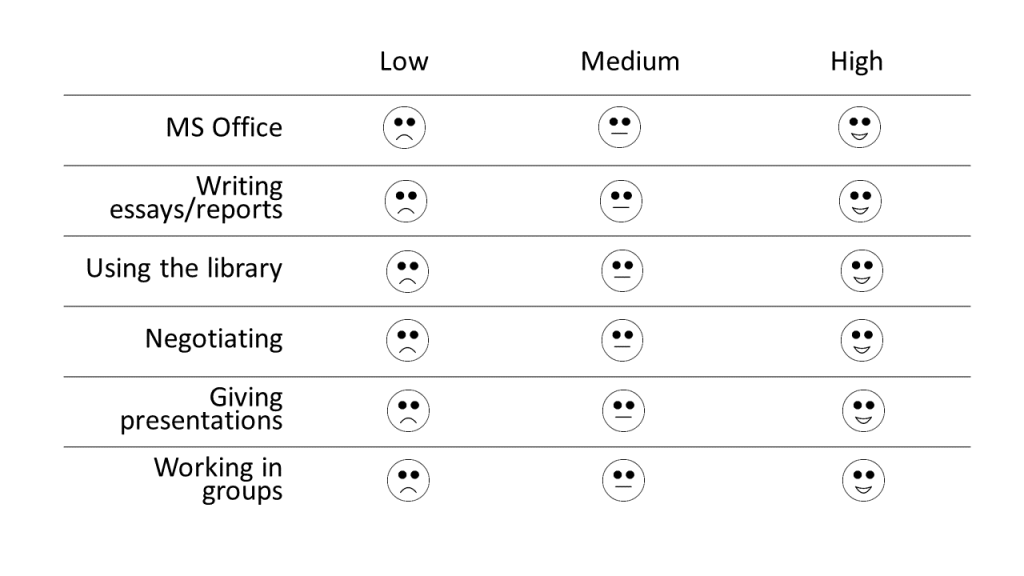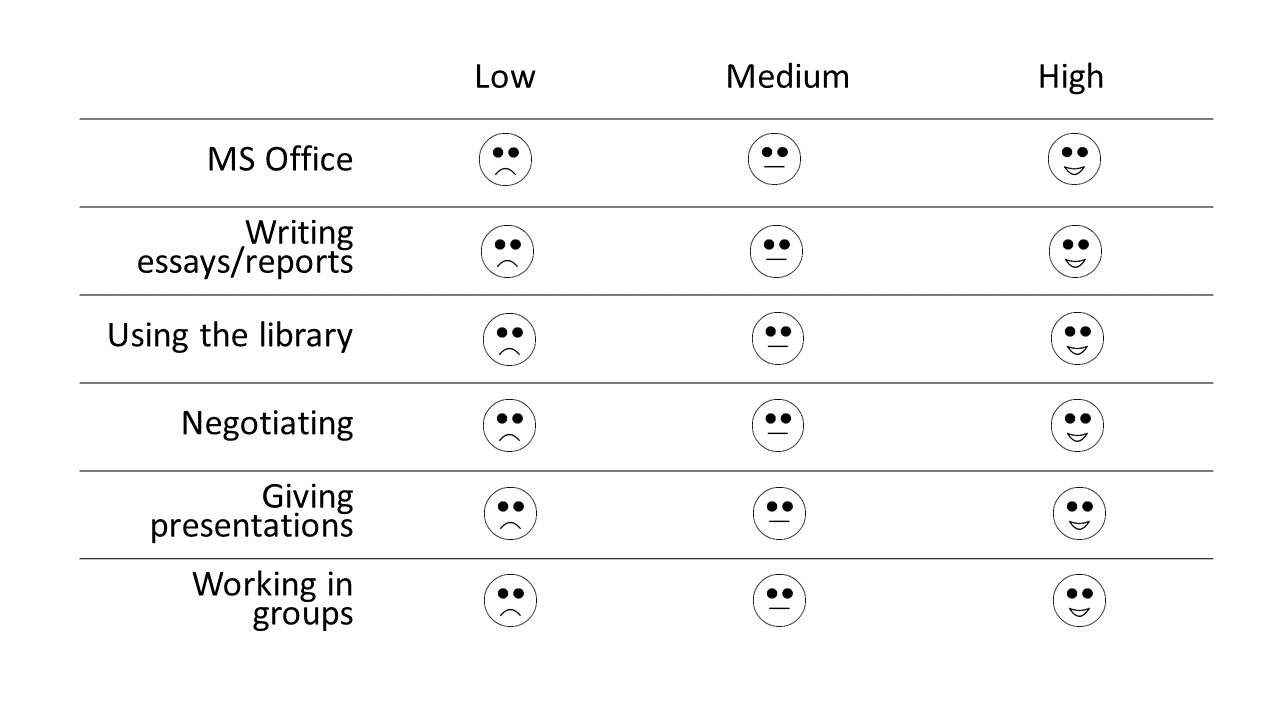LEaD have a weekly Educational Technology drop-in session for academics or course office staff to have a space and some time to get support and/or advice without needing an appointment or a Service Now ticket. For us, it’s a great way to better understand some of the difficulties, challenges or questions that staff can have with using digital technologies in teaching and learning. For our staff, it means that there’s a regular day and time each week when they know that there’s someone they can ask that burning question of that they’ve not got round to tackling themselves, or which might benefit from another perspective on things.
Diana Marsland, a visiting lecturer in SMCSE, dropped by one of the sessions I was hosting recently, and presented me with a nice challenge to work on, related to Poll Everywhere. She was planning to use a poll in an introductory class with a new cohort of students that asked them to anonymously indicate their degree of confidence in a range of different areas related to university study – finding information online, academic referencing, giving presentations to groups, and so on. The intention was that she could use this to get an overview of where her new students were at regarding their perception of their own academic readiness. This would then help her to direct them towards the areas of academic learning support that were most beneficial to the class.
I asked how long she was intending to run the activity for. Ideally, within about five minutes, she replied. There were nine areas that she wanted to cover, and students would give themselves a number on a scale of zero to nine. I thought that it was a great idea – it would be a nice icebreaker for a new class, a great use of Poll Everywhere, and helpful in terms of making her fresh faces aware of what else was on offer to them to support them through their journey in extending their knowledge of Construction Management. However, I couldn’t see how she could fit everything that was in the one poll into the amount of time that she had allocated to it, whilst still making it meaningful for her students.
Looking at the question type palette within Poll Everywhere, there didn’t seem to be anything ready-made that she could use out of the box. This meant a bit of a rethink of the activity, and a simplification too. We ended up producing the below image, built in PowerPoint and exported as an image file. It was then uploaded to Poll Everywhere as a Clickable Image – one of the more flexible poll types available:

Rather than using a 0-9 scale, we went for Low, Medium and High in terms of levels of confidence. These were then reinforced with an emoji-type icon that I sourced from openclipart.org. We also reduced the number of options for them to vote on from nine to six. With the smaller scale, the emoji icons, and the reduced number of voting options, we applied a useful principle from information design of keeping an artefact simple in order to make it more usable.
With a Clickable Image, respondents simply tap or click on a location on their screen, which is then recorded as a marker on true poll. Diana’s ‘study skills confidence grid’ would then give her a ‘heatmap’ style visual indication of how perceived confidence in core study skills was distributed across her class. This would show her which areas her students were strongest in already, where they needed the most support, and therefore which support services within the university were most fitting to recommend her students to seek out. I’m looking forward to finding out how this resource went down in class!
What have you used Clickable Images for in teaching? Let us know in the comments below.
—
- Right click on this image and choose ‘save as’ if you’d like to use this in a poll in your teaching, or download the ‘Study Skills Confidence Grid’ PowerPoint template to customise it for your own needs.
- Tip: if your students are using a smartphone or tablet to respond to your poll rather than a laptop, this particular image is easier to interact with in landscape mode rather than portrait.
- Further reading: this blog post describes using Clickable Images for tracking a discussion (in this case around learning spaces), and gives plenty of great tips on using this poll type.
—
LEaD Educational Technology drop-in: every Thursday, 13:30-15:00.

